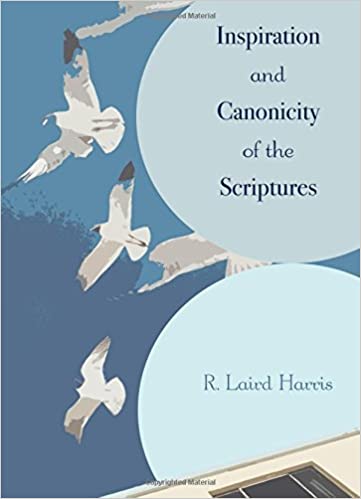A Brief Book Summary from Books At a Glance
By Steve West
Introduction
This book examines and defends the historic view of the inspiration of Scripture. It then engages with questions of canonicity. Harris shows how both the Old and New Testament canons were put together. He gives the reasons why certain books were accepted and others were rejected. Prophetic and apostolic authorship were the key to the production of the canonical books.
Table of Contents
Part 1 – Inspiration
Chapter 1 Introduction
Chapter 2 Why We Believe the Bible
Chapter 3 Verbal Inspiration in Church History
Chapter 4 Textual Criticism and Inspiration
Chapter 5 Objections to the Doctrine of Verbal Inspiration
Part 2 – The Canonicity of the Old Testament
Chapter 6 History
Chapter 7 The Determining Principle of the Old Testament Canon
Chapter 8 The Extent of the Old Testament Canon
Part 3 – The Canon of the New Testament
Chapter 9 Introduction
Chapter 10 Determining Principles of the New Testament Canon
Chapter 11 The Patristic Test of Canonicity
Chapter 12 The Later Authors and Problem Books
Chapter 13 Conclusion
Summary
Part 1: Inspiration
Chapter 1: Introduction
Throughout Western civilization the majority of people have honored the Bible. It was taken as beautiful literature, but even more importantly it was seen as the Word of God. Scripture was accepted as being inspired by God. Every word was considered authoritative and without error. Both Protestants and Roman Catholics agreed at the Reformation about the inspiration and inerrancy of Scripture. In the past several decades, however, there has been an erosion in the world and the church in confidence in the reliability and accuracy of Scripture. People used to take the Scriptures at face value, but the rise of “higher” criticism began to tear down this view.
The Documentary Hypothesis and the search for editors and redactors fostered doubt about the nature of Scripture. The Pentateuch was postdated to after the Babylonian Exile, completely undercutting the traditional view that associated its authorship with Moses; it was also seen as fictitious history. It was argued that monotheism was an invention, that David never wrote Psalms, and that prophecies were written after the events they purported to describe. Today, however, many of the results of liberal criticism have been overturned and the biblical accounts have been supported through archaeology.
Evolutionary theory has also been used to try to undermine the accuracy of Scripture. This theory has significant problems, however, and we are within our rights to think that God created distinct kinds that reproduce according to their kinds. Some people continue to believe that progressive thinking will sweep away the Bible, but this has not happened. Many seminaries and churches that used to be orthodox have abandoned the high view of Scripture. Professors and pastors are leading the way in rejecting full inspiration. Nevertheless, the church has not been defeated in history, and we must follow Christ and defend the Bible with everything we have.
Chapter 2: Why We Believe the Bible
Many Christians defend their view of Scripture by quoting 2 Timothy 3:16 or 2 Peter 1:21. These are good verses but citing them allows for the charge of circularity (i.e. you are using the Bible to prove the Bible). Those who level this charge against believers need to understand that the entire Bible references itself as authoritative and the very Word of God. Jesus frequently pointed to the authority and complete trustworthiness of Scripture. Jesus often cited and quoted the Scriptures as God’s Word.
In the Sermon on the Mount he did not overturn Scripture but rather corrected erroneous scribal interpretations of it. The Pharisees took God’s commands in an externalist sense, but Jesus showed them that they were really to be applied internally in the heart and mind. Jesus’ teachings in the Sermon on the Mount often direct his hearers to the true meaning of the Law. Nothing in what he said in his “But I say unto you” statements contradicted the original meaning of God’s Law. Like the rest of the Jews, Jesus accepted the full authority and trustworthiness of Scripture.
[To continue reading this summary, please see below....]The remainder of this article is premium content. Become a member to continue reading.
Already have an account? Sign In
Buy the books

INSPIRATION AND CANONICITY OF THE SCRIPTURES, by R. Laird Harris